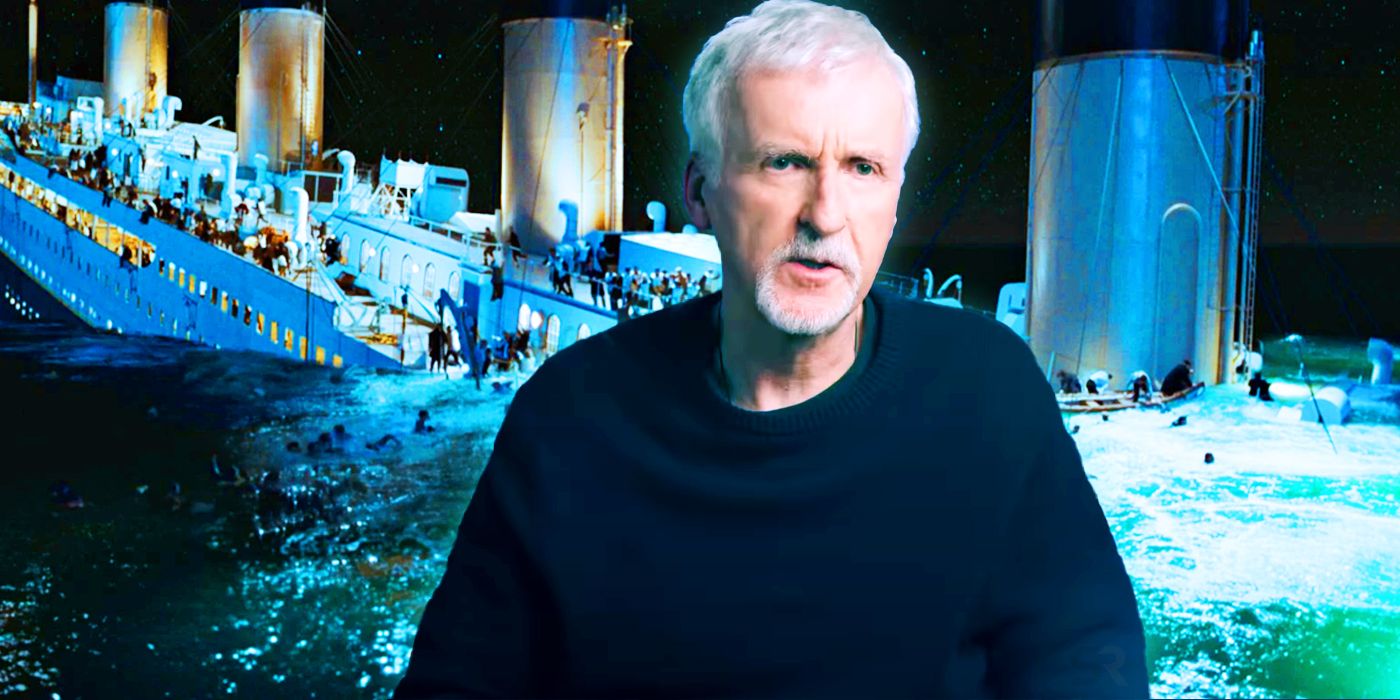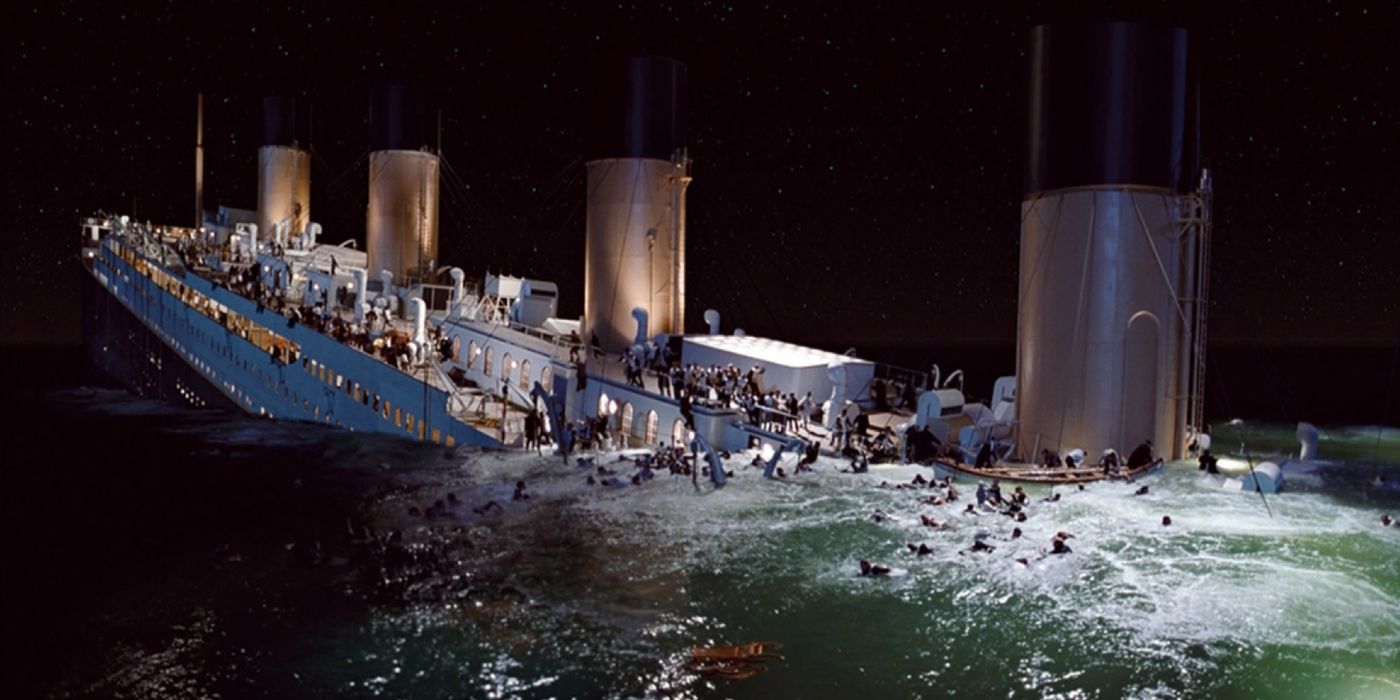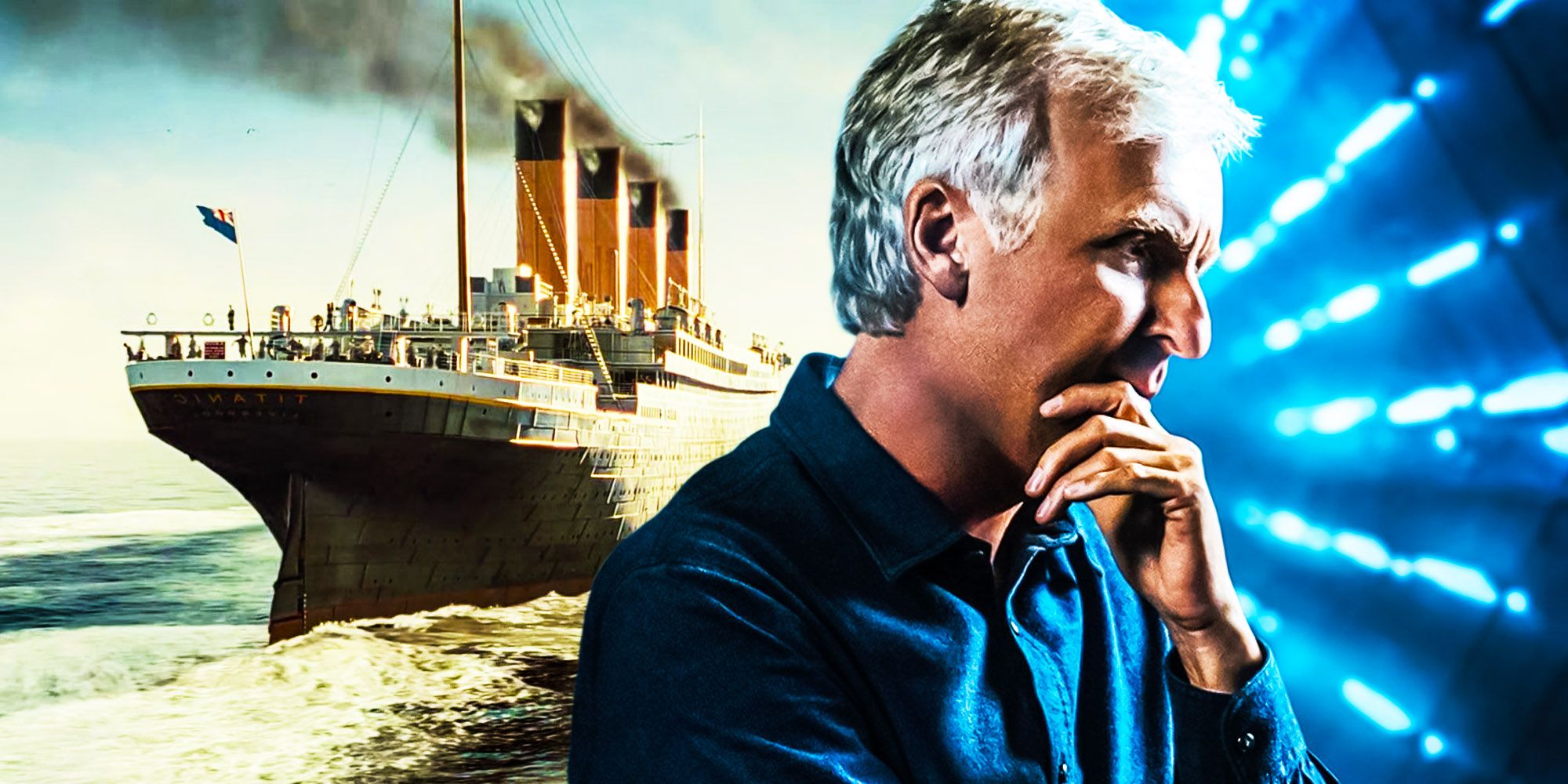James Cameron’s Titanic recreated the sinking of the title ship while telling a tragic love story, and here’s how Cameron was able to recreate the fate of the Titanic. James Cameron’s name is now mostly associated with sci-fi movies and impressive visual effects, and before Avatar became his most talked-about project, Titanic was (and continues to be) one of his most outstanding cinematic achievements. Titanic broke various records and was the most expensive movie ever made at the time, and it’s easy to see why as Cameron went above and beyond in order to make an accurate representation of the Titanic and its tragic maiden voyage.
Although it’s based on the real-life tragedy of the RMS Titanic in 1912, Cameron’s movie tells a fictional story, following Rose DeWitt Bukater (Kate Winslet), a first-class young woman, and Jack Dawson (Leonardo DiCaprio), a third-class passenger, as they fall in love aboard the infamous ship. In order to bring this to life, Cameron and his crew made a reconstruction of the Titanic, which allowed for a visually stunning and accurate representation of the ship, its interiors, and its sinking, but the latter is even more impressive thanks to how it was achieved.
Titanic Used CGI & Practical Effects To Recreate The Sinking
In order to recreate the Titanic, the different rooms and parts of it, and its sinking, Cameron and crew used a combination of scale models, CGI, and other practical effects. With the help of blueprints provided by Harland and Wolff, the RMS Titanic’s builders, the ship was built to full scale but had some sections removed in order to fit in the horizon tank of seventeen million gallons that was built, and the remaining sections were filled with digital models. The front of the ship had a platform that allowed them to tilt the ship during the sinking sequences, though it could only be tilted at six degrees. The scenes depicting the sinking of the Titanic needed a much greater tilt, so Cameron and crew used different methods to give this illusion, such as shooting using a Dutch tilt, a composited waterline that made the ship look more tilted, and various miniatures of the ship.
Of course, the scenes that were filmed with the help of miniatures had to have some CGI magic as well. As explained by Digital Photo Pro, the shots where miniatures were used were later composited with foreground extras, and these were shot against a green screen to make the scale look realistic. Titanic also used motion capture technology for its most complicated stunts, such as when passengers were falling off the ship, which was achieved with a combination of footage of stunt people with a CGI person mid-shot. CGI was also used for less complicated scenes, just to add a couple of details, such as the breath of the characters as they were in the freezing ocean.
How James Cameron’s Titanic Impacted The Film Industry
Seeing all the work involved in recreating the ship and its sinking, it’s not surprising that Titanic was the most expensive movie ever made at the time, and it also broke box office records, becoming the highest-grossing film of all time for many years. Cameron’s movie also set the bar high in terms of visual effects and how to combine these with other techniques in order to achieve realism, and he pushed his own boundaries years later with Avatar. Titanic’s legacy goes beyond Hollywood, as it also contributed to advancements in underwater filming thanks to James Cameron’s obsession with shipwrecks and the Titanic, and while the story of Jack and Rose is now seen through a different lens, the visual achievements of the movie are undeniable.



